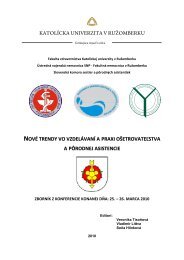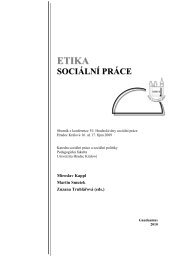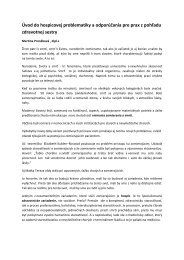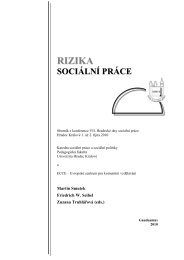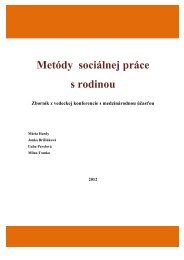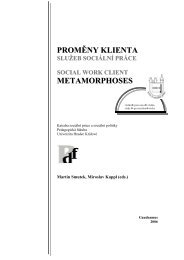Zmena klÃmy â možný dopad (nielen) na obyvateľstvo - Prohuman
Zmena klÃmy â možný dopad (nielen) na obyvateľstvo - Prohuman
Zmena klÃmy â možný dopad (nielen) na obyvateľstvo - Prohuman
You also want an ePaper? Increase the reach of your titles
YUMPU automatically turns print PDFs into web optimized ePapers that Google loves.
other areas which are under strong anthropopressure. For them, <strong>na</strong>tural factors,<br />
divided into volcanic, solar and astronomical, are more likely to be responsible<br />
for the changes.<br />
The most important causes of climate change have just been mentioned. We<br />
do not know the range of their effect, but it is important to be aware that they do<br />
not act independently, irrespective of each other. Most likely, only the outcome of<br />
their reciprocal interaction is the result of certain climate changes.<br />
Fig. 3. Long-term<br />
climate change<br />
factors (according<br />
to Heino 1994)<br />
In addition to the above, in spite of the progress in science, the development of<br />
measurement and computer techniques, there are still methodical challenges in the<br />
climate change study. They concern the quality and homogeneity of the constructed<br />
and a<strong>na</strong>lysed measurement series, which are the foundation of a precise study<br />
of the climate history of the last 100–200 years. Different aspects (fig. 3) may be<br />
responsible for the erroneousness of the measurement series. The lack of homogeneity<br />
may directly come from, for example, station relocations or changes in instrumentation<br />
due to worsening accuracy. Another crucial aspect, which affects the<br />
values estimated for the whole globe, is the number of stations which provide the<br />
data. The number has grown significantly over the last 100–150 years so, unquestio<strong>na</strong>bly,<br />
the ultimate values used in a<strong>na</strong>lyses must have been altered by this fact.<br />
The use of remote sensing appears to be the solution to the problem of homogeneity.<br />
They make it possible to observe the climates of i<strong>na</strong>ccessible areas, where weather<br />
stations are rare and, in many aspects of meteorology and climatology, these<br />
105





